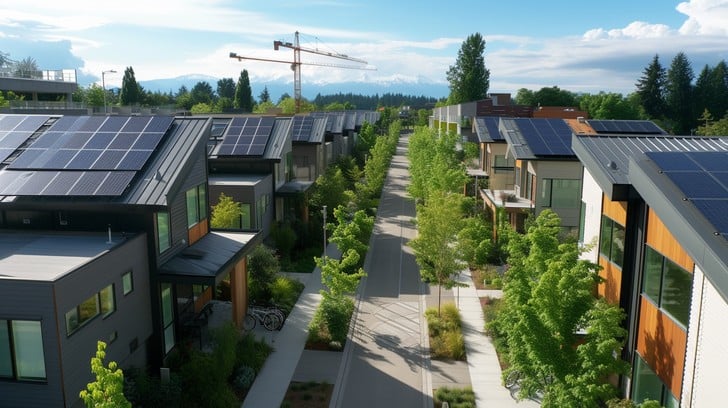
Climate Responsive Architecture Definition: A Guide for Home Enthusiasts
In todays rapidly changing world, understanding the climate responsive architecture definition is crucial for anyone interested in sustainable living and building practices. This term refers to designing buildings that respond and adapt to the local climate to enhance comfort while reducing energy consumption. For home enthusiasts, this approach not only promises a more sustainable future but also a more affordable and comfortable living environment.

What is Climate Responsive Architecture?
Climate responsive architecture involves designing structures that leverage the natural environment to provide comfort and efficiency. This includes considering factors such as local weather patterns, sun orientation, wind direction, and natural resources. By integrating these elements, buildings can reduce reliance on artificial heating and cooling systems.
Importance of Sustainable Design
The importance of this architectural approach cannot be overstated. As we face the challenges of climate change, designing buildings that naturally adjust to their surroundings is crucial. Sustainable design not only reduces the carbon footprint but also promotes the use of renewable materials and energy-efficient technologies. For more insights, you can explore this article on sustainable housing policies.
Benefits of Climate Responsive Design
There are numerous benefits to adopting a climate-responsive approach in architecture:
- Energy Efficiency: By harnessing natural light and heat, homes can significantly reduce their energy usage.
- Cost Savings: Lower energy consumption results in reduced utility bills.
- Enhanced Comfort: Natural ventilation and temperature control ensure a more comfortable living space.
Elements of Climate Responsive Architecture
Sun Orientation
Understanding the path of the sun is essential in climate-responsive design. Proper orientation can maximize natural lighting and reduce the need for artificial lights.
Natural Ventilation
Incorporating natural ventilation systems, such as strategically placed windows and vents, can improve air circulation and reduce the need for mechanical cooling systems. Check out our detailed guide on natural ventilation for more information.
Use of Local Materials
Utilizing locally sourced materials not only supports the local economy but also ensures the materials are well-suited to the local climate, enhancing the building’s overall responsiveness.
Water Management
Efficient water management systems, such as rainwater harvesting and greywater recycling, are integral to climate-responsive architecture.
Case Studies in Climate Responsive Architecture
Exploring successful case studies can provide valuable insights into the practical application of these principles. Our review of affordable housing case studies showcases examples where climate-responsive design has been effectively implemented.
Example 1: The Solar House
This house utilizes solar panels and a cleverly designed roof to maximize energy efficiency while providing comfort and reducing costs.
Example 2: The Wind-Catching House
Designed to utilize prevailing winds for natural cooling, this house demonstrates the power of incorporating local climate data into architectural design.
The Future of Climate Responsive Architecture
As the demand for sustainable living grows, the principles of climate-responsive architecture will become increasingly prevalent. Innovations in technology and materials will play a critical role in evolving these designs to be even more efficient and accessible.
Innovations in Sustainable Materials
The development of new, sustainable materials will help architects design structures that are both responsive to the climate and environmentally friendly. Visit our article on recycled materials for more ideas.
Technological Advancements
Advancements in technology, such as smart home systems and energy-efficient appliances, will further enhance the capabilities of climate-responsive architecture.
Conclusion
Understanding the climate responsive architecture definition is essential for any home enthusiast looking to embrace sustainable living. By incorporating natural elements into the design, these buildings not only provide economic and environmental benefits but also enhance the quality of life for their inhabitants.

FAQs
What is the main goal of climate-responsive architecture?
The main goal is to create buildings that naturally adapt to the local climate, reducing energy consumption and enhancing comfort.
How does natural ventilation work in climate-responsive architecture?
Natural ventilation involves using windows, vents, and other openings to facilitate air movement, reducing reliance on artificial cooling.
What are the economic benefits of climate-responsive architecture?
By reducing energy use and utilizing local materials, climate-responsive architecture can lead to significant cost savings over time.
This article contains affiliate links. We may earn a commission at no extra cost to you.